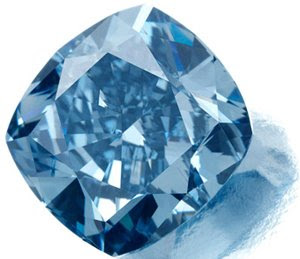
DCLA is Australia's premier diamond grading laboratory, and the only laboratory grading diamonds to the IDC rules. The IDC rules are the internationally recognised and accepted rules for diamond grading and diamond certification as set out by the WFDB, IDMA and Cibjo.
The attempt to secure an international diamond grading standard has been going on for the past three decades. Although there appears to be goodwill on all sides toward reaching an agreement, it seems far from clear that it will be achieved in the near future.
The absence of a single,
internationally used diamond grading standard is one of the more contentious and persistent issues in the diamond and jewellery sectors. And it’s not for a want of trying. Many attempts have been made, but for a number of reasons all have fallen short of the goal.
As a result, there is no internationally recognised organisation that can determine equivalent educational curricula for gemologists, or to corroborate that all gem labs are operating in line with accepted procedures. Although there is general concurrence in the business as to how diamonds should be graded, there is no agreement, even among the largest institutions, as to the exact systems of measurement that should be adopted for clarity and cut.
The most obvious solution is set of standards recognised by the International Standards Organisation (ISO), and, indeed, in 1990, the painstaking process of formulating an ISO grading standard got underway. But after a about a decade and half it fizzled out unceremoniously, largely as a result of a lack of enthusiasm on the part of some of he largest players in the gemmological community.
ISO, a non-governmental body with representatives from 163 countries, was created in 1947. It has developed more than 18,000 International standards on a variety of subjects and some 1,100 new ISO standards are published every year. Its authority depends on its power to provide a guarantee of the integrity of those organisations that are allowed to display its logo.
The concept of a single grading system was first suggested in 1975 by the World Federation of Diamond Bourses (WFDB) and the International Diamond Manufacturers Association (IDMA). To that aim, the two organisations jointly established the International Diamond Council (IDC) and in 1978 at the World Diamond Congress approved the IDC Rules for Grading Polished Diamonds. HRD Antwerp became the largest lab to apply the IDC rules.
The effort to create an ISO standard for diamond grading that began in 1990 involved technical committee ISO/TC 174, which had been created at the initiative of both the jewellery and diamond sectors. Two working groups were formed—Working Group 1, which was charged with establishing a standard method for defining precious metals, and Working Group 2, whose role was to formulate a harmonized system for diamond grading.
Four parties were represented in Working Group 2: International Diamond Council; the Gemological Institute of America (GIA); CIBJO, the World Jewellery Confederation; and the Scandinavian Diamond Nomenclature (ScanDn). At the same time, an expert subcommittee was established. It would focus only on the technical issues, leaving commercial and political considerations aside.
In May 2002 — 12 years after it first began the project — two documents, one of 41 pages and the other of 39 pages, which together make up a Final Draft International Standard (FDIS), were circulated for approval among a list of ISO national member organizations that had expressed an interest in voting on the issue. But already at that stage, GIA, which operates the largest gem grading facility in the United States, had stated categorically that it had no intention of relinquishing its grading system in favor of one approved by ISO. As the then GIA President Bill Boyajian stated that year during a panel discussion in Basel: “We are confident that the system that we have developed could be accepted as an international standard.”
International Diamond Council Chairman Stephane Fischler says the main aim of securing ISO standards for diamond grading would be to bolster consumer confidence. Diamond jewellery buyers may be confused by the wide range of gem labs offering services, and would be able to rest assured that there is an added layer of protection when obtaining a grading report from an organisation that is ISO approved, he said.
“We have to recognise that consumers are demanding full transparency, but they are being flooded with a lot of freely available information, so we have to enable that by creating universal standards,” Fischler said. “I believe there is a lot of goodwill on all sides and that agreement will eventually be possible. I am quite hopeful that it can happen.”
“The IDC rules are supported by the World Federation of Diamond Bourses and the International Diamond Manufacturers Association, along with some labs in Europe and in Australia. In addition, the CIBJO Blue Book on diamonds is close to the IDC rules. We have already reached agreement with CIBJO on descriptors for synthetic diamonds, so we see that reaching a consensus is possible. There has been renewed interest between the
IDC and CIBJO about a possible joint document. The IDC has sat around the table with the GIA, HRD, CIBJO and others to discuss this issue, but we have not yet managed to reach agreement for several reasons,” Fischler said.
“We have been in contact with the GIA for a long time on a general level, and that continues. Let us remember that the basis of modern grading has been created by GIA. There are some difficulties regarding for example, the Excellent cut grading nomenclature. But I believe there are some solutions to be found,” Fischler noted.
In the absence of an ISO standard, the CIBJO Diamond Blue Book is possibly the most used reference. It was compiled by the CIBJO Diamond Commission, composed of representatives of trade organisations and laboratories from around the world. In October 2006, a district court in Munich, Germany, used the CIBJO Blue Book when it delivered a ruling that declared the use of the term “cultured diamonds” by a synthetics distributor to be misleading.
Georges Brys, General Manager of HRD Antwerp, says that ISO issue has to be tackled with great sensitivity to avoid any impression under European or American law that an anti-trust issue was at hand. “We must hold discussions that are correct from a legal point of view,” Brys commented. “The talks should be in an environment where there are neutral people in the room, and that means IDC people who should coordinate the issue. That way, you have the WFDB, IDMA and CIBJO on board. HRD Antwerp already acts in accordance with the IDC rules.
“We must have a neutral party, such as the
IDC, running such a meeting and keeping accurate minutes to ensure that there is no suggestion of restrictive measures; it must be open, transparent and objective. The IDC are the experts in this matter,” he stated.
Brys explained that one issue of concern was the sets of master stones used by the different labs. HRD Antwerp has been using its set of master stones for 40 years, while the GIA has been grading according to its set for around 70 years. “As the GIA said at the China Diamond Conference in Shanghai last week, it has hundreds of thousands of certificates out in the market,” Brys commented. “So if standards were now changed, consumers would not have anything to compare with. And that, after all, is the main aim, to ensure that consumers have a clear and standardised way of understanding what the diamonds on offer actually are in order to boost their confidence.”
Brys says he is hopeful because he believes all parties are coming closer together. “The fact that we are talking is a good step. All the labs have said they are in favour of finding an international standard to help consumer understanding and confidence. As they said at the meeting in China, they are willing to come together and discuss the issue. That is a very important first step,” Brys added.
Not everyone is convinced about the need for an ISO standard for grading, or the possibility, that it could be achieved. Among these is Roland Lorie, who heads the Antwerp-headquartered International Gemmological Institute (IGI) which has been operating since 1975. The grading is based on two commonly used international standards. I am not sure that the different labs will be prepared to compromise on the terminology, Lorie said. They will want to keep their terminology because they have been using it for many years. We are talking about a difference in terminology rather than one of standards.
Meanwhile, from a consumer point of view, Lorie says the discussion has already been going on for 30 years. They know the lab but they may not be familiar with the exact standards that are used, he says. They are looking for a certificate from a recognized lab that built up its reputation and expertise over a number of years.
This universal language or terminology has existed for 70 years or so and is used by almost everyone in the diamond business. Whatever the majority of the diamond trade is using should be taken to the ISO to be adopted, he said. Lorie believes that even if an ISO standard was created for diamond grading, it could not be completely enforced. How would they be able to check that a small lab, that may have the ISO accreditation, is using the agreed grading standard and not the one it was using previously? In addition, there are labs that have built up their operations and expertise for many decades and will continue to implement top-quality work. But what about a small lab that receives the ISO standard? It might feel that it does not have to work hard anymore.
There are small labs in the United States, for example, that are not subject to the same rules as the large labs who must ensure that a single customer cannot account for more than 20 percent of its overall business. There are small labs for whom one client can account for most of their work, and there are labs that are also dealers, so there is a clash of interests. Apart from that, how would ISO be able to inspect so many labs to check that their work is in line with the standard?
“I think the most solid proof of the quality of the larger labs was proven during the global financial crisis. Before that, in 2007 and 2008, you suddenly saw many new labs being set up with a lot of money being invested in establishing and marketing them. Following the crisis, we saw most of them simply fell away while the large labs survived quite well. This proves, I believe, that the bigger labs are appreciated for their expertise and the quality of their work. You cannot set up a lab overnight and expect that a lot of marketing will turn it into a brand within a year or two.”
Meanwhile, another Antwerp diamond source said that the problem was largely one of commercial interests. “The GIA did not want to lose diminish its brand by agreeing to grading standards that were not entirely those of the organisation itself. “There are commercial interests involved, and I understand that. They want to maintain their brand and not compromise it,” the diamantaire added.
It should be noted that while an ISO grading remains an elusive goal, ISO is firmly ensconced in the gemmology sector, and has been for almost 15 years. In February 1996, the HRD Certificates Department was officially accredited according to the standards EN 45001, ISO/IEC Guide 25 and the relevant clauses of ISO 9002, for the grading of polished diamonds. As such the facility became the first worldwide to obtain such accreditation.
Five years later HRD Antwerp was awarded a new international standard ISO/IEC 17025, which relates to the general requirements for the competence of testing and calibration laboratories. It was one of the first laboratories to have achieved such a status worldwide, and was the very first in Belgium and in the diamond grading community to do so.
The ISO accreditation held by HRD Antwerp and a select group of other labs shows that they are competent both from a technical and procedural perspective, and has also implemented proper quality control systems.














